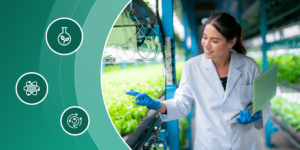Just last week, we talked about some of the factors driving up the number of immigrants seeking permanent residency in Canada. The increase we’ve been seeing over the past few years is hardly surprising. After all, the federal government hasn’t been shy about the fact it’s looking to admit more than one million new permanent residents by the end of 2021.
To help reach this goal, a number of immigration pilot programs have been launched. In fact, this past week, Justin Trudeau’s Liberal government announced the Agri-Food Immigration Pilot. Below, we break down the four most important things you need to know about the latest pathway to Canadian permanent residency.
Are you considering study abroad in Canada? Use ApplyBoard’s free platform to check out programs from hundreds of different academic institutions.

It begins in 2020
The Agri-Food Immigration pilot program begins in 2020 and runs for three years. Details on how participants may apply for permanent residence through the program will be made available in early 2020. Keep an eye on the Government of Canada website for more details.
It will fill shortages in the agri-food sector
Right now, many employers in the Canadian agricultural industry rely on temporary foreign workers (TFW) hired through the Seasonal Agricultural Worker Program (SAWP). The problem is, workers who enter Canada through SAWP are given limited term work permits and don’t have a pathway to permanent residency.
The good news is there’s a need in certain parts of the agricultural sector for year-round labour. The Agri-Food Immigration Pilot’s goal is to attract meat processing workers and mushroom farmers. Both of these industries face some of the sector’s largest labour shortages.
As per the Government of Canada website, these occupations and industries are eligible for the pilot:
- Meat processing (retail or industrial butchers and food processing workers)
- Harvesting labourer for year-round mushroom production and greenhouse crop production
- General farm worker for year-round mushroom production, greenhouse crop production, or livestock raising
- Farm supervisor and specialized livestock worker for meat processing, year-round mushroom production, greenhouse crop production or livestock raising.
The pilot could help thousands become permanent residents
Every year it runs, the Agri-Food Immigration pilot will accept up to 2,750 principal applicants. Approved applicants may also bring their families to Canada. After adding in family members, the pilot could welcome around 16,500 new permanent residents over its three-year duration, per Immigration, Refugees and Citizenship Canada.
Eligibility Requirements
To apply for the Agri-Food Immigration Pilot, you must meet the following criteria:
- 12 months of full time, non-seasonal Canadian work experience in the Temporary Foreign Worker Program, in an eligible job in processing meat products, raising livestock, or growing mushrooms or greenhouse crops
- A Canadian Language Benchmark level 4 in English or French
- An education at the high school level or greater (Canadian equivalency)
- A job offer for full time, non-seasonal work in Canada, outside of Quebec, at or above the prevailing wage
Curious about what life in Canada can be like for international students and other immigrants? Check out our posts Post Graduation Work Permit: How to Work in Canada After Graduation and the 4 Reasons Permanent Residency in Canada is on the Rise.



